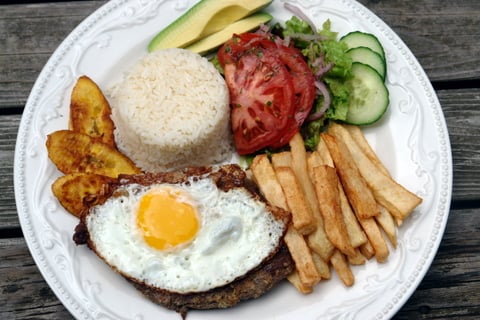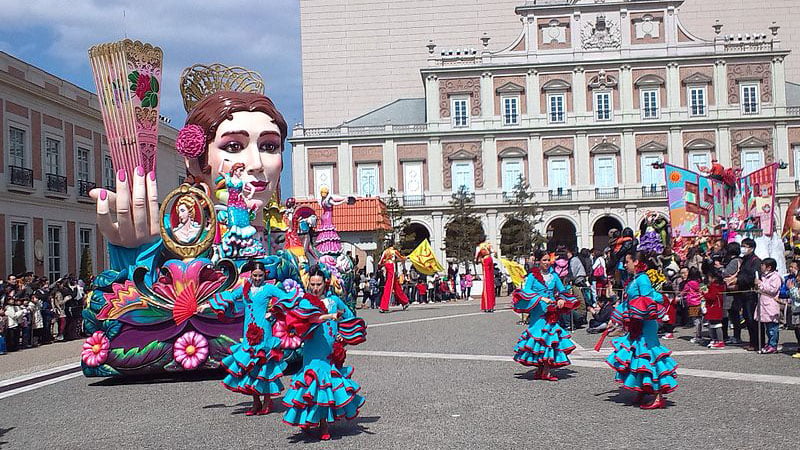CARNIVAL AROUND THE WORLD
The carnival is a celebration that takes place immediately before the Christian Lent (which begins with Ash Wednesday), and has a variable date (between February and March depending on the year). Traditionally, it starts on a Thursday (Thursday, Thursday) and ends on the following Tuesday (Tuesday of Carnival). The carnival combines elements such as costumes, groups that sing couplets, parades and street parties. Despite the differences that its celebration presents in the world, its common characteristic is that of being a period of permissiveness and a certain lack of control. In its beginnings, probably with a certain sense of modesty proper to religion, the Carnival was a parade in which the participants wore costumes and wore masks. However, the custom was transforming the celebration to its current form.Carnival is one of the most important and fun celebrations around the world! Everyone plays in a way that entertains and captures big and small attention.
Here we will see a certain comparison of this celebration with Ecuador, Brazil and Spain.

ECUADOR
In Ecuador, the oldest record that prohibited water play was the decree issued by the Congress of 1868.But not only the authorities adopted that measure. It is known that in the seventeenth century the Jesuits exposed the Blessed Sacrament in the church of the Company, during the three days of Carnival, "to avoid water games, very typical of the devil."At that time, the Bishop of the city of Quito threatened excommunication to anyone who played Carnival. He also attributed to this game the main reason for the Píllaro earthquake in 1755.Despite all these prohibitions and threats, the Carnival game continues to this day.According to information from the website goraymi.com, Patricio Sandoval, a researcher at the Ibero-American Institute of Natural and Cultural Heritage (Ipanc), says that the roots of the Ecuadorian Carnival are linked to the indigenous festival of the end of the year or Paucar Huatay, one of the four largest of the year.This means that the Carnival is the culmination of the agricultural cycle and the inauguration of another.He explains that in the Andean areas, for example, it is a community party that strengthens the sense of organization, while the Carnival of the mestizos, in contrast to the indigenous rituals, ends with the beginning of Lent.It also stresses that despite everything, the celebration has the virtue of uniting or chaining people through food, water and songs.The Ecuadorian carnival is very cultural and is celebrated with water, carnival foam, talcum powder or flour to paint the face or any type of plant type paint. The most known place of this celebration is the city of Guaranda, capital of the Bolivar Province, 4 hours from the capital of Ecuador, where they arrive from the same mountain range and the Ecuadorian coast because they are in the middle of the equator. Drink the typical liquor of the area, the "blue bird". There is a parade of allegorical cars, identifying various themes and the majority of comparsas dances the traditional carnival anthem "El carnival de Guaranda".
A different celebration is the one that takes place in Ambato land of flowers and fruits, where the characteristic, unlike the rest of Ecuador, are the cultural comparsas, where the parade of floats takes place, decorated with flowers and fruits of the area and delegations from other countries arrive to parade in it. On the coast the celebration in addition to water, foam and balloons also joins the cultural celebrations of the area as in Esmeraldas where international festivals of African-American cultures take place in places like "Calle 8" and Las Palmas Spa. This celebration is very well received by the whole population, so much so that in each of the cities beautiful and cultural shows are offered.

BRAZIL
Las celebraciones de carnaval fueron llevadas a Brasil por navegantes españoles y portugueses, donde se mezclaron con la cultura afro-brasileña, adquiriendo su carácter especial, y se asocian con desfiles con carrozas, disfraces, bailes populares y excesos.1 A pesar de la inspiración católica, sus orígenes europeos se remontan a una clase de carnaval llamado introito ("entrada" en latín) y entrudo en idioma portugués, que se caracteriza por el juego de tirarse agua de una persona a otra para purificar el cuerpo. El entrudo fue prohibido sin demasiado éxito a mediados del siglo XIX, porque era considerado violento por las clases sociales altas (se dice que algunas personas morían por infecciones y otras enfermedades debido a que algunas veces se lanzaban frutas podridas).
Los blocos (bloques), otro nombre para los cordões, son algunas de las actuales representaciones del carnaval popular de Brasil. Están formados por personas que se disfrazan de acuerdo a ciertos temas o celebran el carnaval de forma específica. Las escuelas de samba son verdaderas organizaciones que trabajan todo el año con el objetivo de prepararse para el desfile de carnaval, son especialmente notables los desfiles en el Sambódromo, estadio diseñado por el arquitecto Oscar Niemeyer, en el que unas 70.000 personas se dan cita cada año.





Comentarios
Publicar un comentario